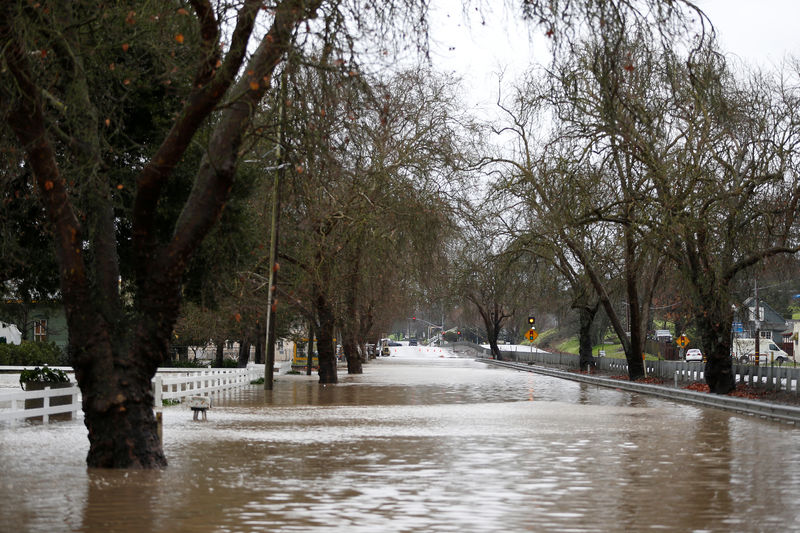By Jane Wardell and Tom Westbrook
WELLINGTON/SYDNEY, April 6 (Reuters) - Thousands of people at the top of New Zealand's North Island were told to evacuate on Thursday while an Australian town is forecast to be underwater later in the day as the tail end of Cyclone Debbie continues to cause major flooding.
The effects of the Category 4 storm, one level shy of the most powerful Category 5, are still being felt in both countries more than a week after it pounded Australia's Queensland state, killing six people, smashing tourist resorts, bringing down power lines and shutting down coal mines. of roads were closed or blocked by landslips across New Zealand's North Island following two days of heavy rainfall, although some areas had been given a reprieve from expected flash flooding. The international airport in the capital of Wellington was reopened on Thursday morning after the severe weather brought down air traffic systems late on Wednesday.
No deaths have been reported, but authorities continued to search for a man reported missing in a swollen river.
New Zealand's mountainous terrain makes its roads susceptible to landslides and many regions are still recovering from November's 7.8-magnitude quake.
Kaikoura, the coastal holiday town at the epicentre of that quake, was shut off from the rest of the country for the second time in six months as connecting roads were again hit by landslips.
In Australia, where the deluge was still flowing through tropical river systems, major flooding is forecast to hit the Queensland city of Rockhampton at lunchtime on Thursday and put the town underwater for two days.
Rockhampton's airport closed and authorities have built a temporary levee to protect streets from the slowly rising water. Residents sought shelter in evacuation centres, with some choosing the Fitzroy Hotel, a local pub on higher ground.
The Australian disaster zone stretched 1,000 km (600 miles) from Queensland's tropical resort islands and Gold Coast tourist strip to the farmlands of New South Wales state.
Australian insurers have declared the event a catastrophe likely to cost more than one billion dollars, with state officials saying recovery and repairs will take months. (Editing by James Dalgleish)
